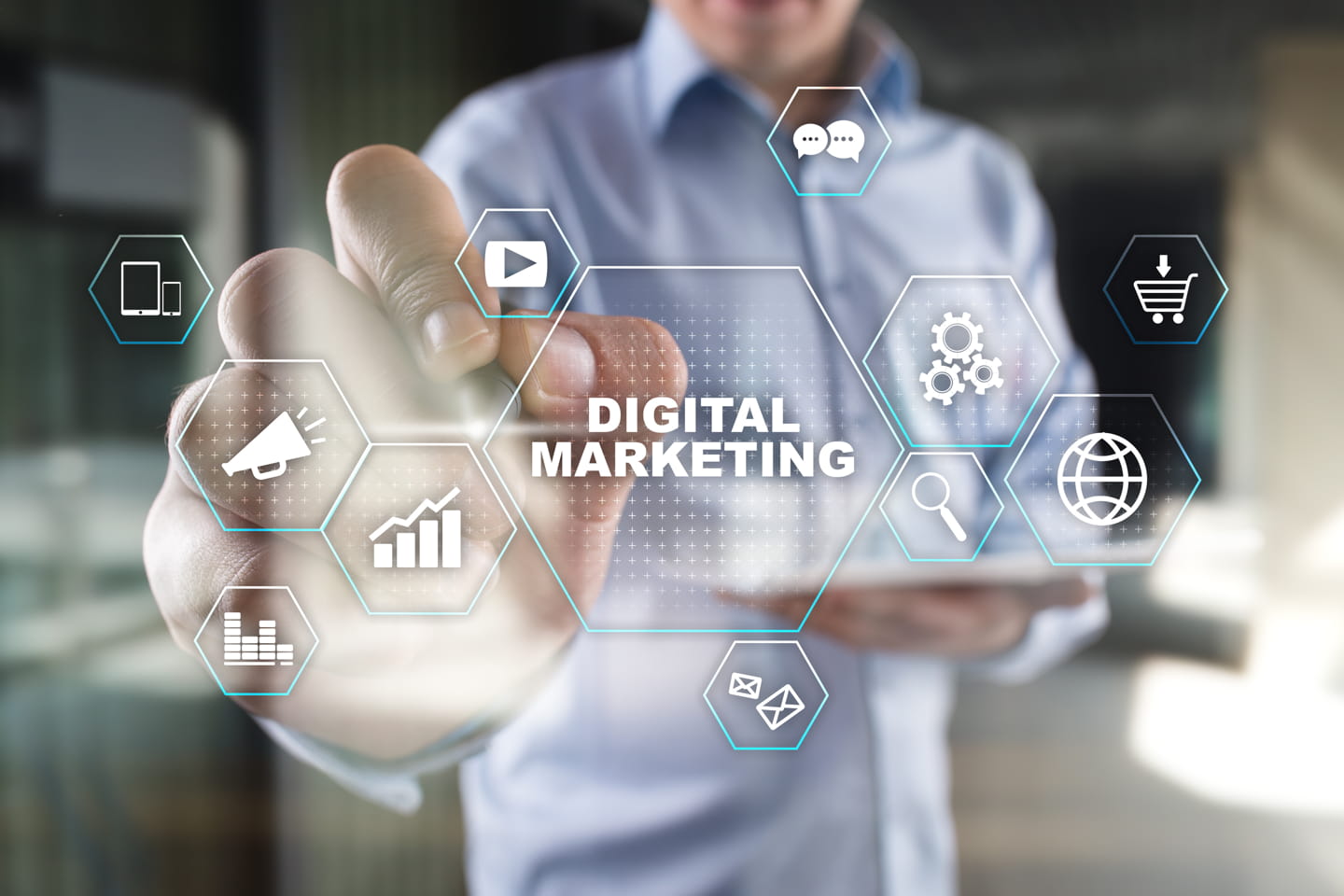
Digital marketing has become an integral part of modern marketing strategies. It allows businesses to reach out to customers through various online platforms and engage with them in a personalised manner. However, digital marketing as we know it today has come a long way from its humble beginnings. Digital marketing is a term that is commonly used to describe any marketing activity that is done through digital channels. It has become an essential part of the marketing industry, and it is constantly evolving to adapt to new technologies and trends.
In this article, we will explore the history of digital marketing, from its beginnings to the present day. It has come a long way since its inception in the late 1970s, with the use of personal computers and the first commercial email sent in 1978. Over the past few decades, digital marketing has evolved into a complex and multi-faceted industry that has transformed the way businesses reach and interact with their customers.
The Beginnings of Digital Marketing
The history of digital marketing can be traced back to the 1980s, when the first personal computers were introduced. Marketers began experimenting with computer-based methods of reaching out to their target audience. This led to the birth of email marketing, which quickly became one of the most popular forms of digital marketing. The first known email marketing campaign was sent by Gary Thuerk, a marketer at Digital Equipment Corporation, in 1978. He emailed 400 potential clients promoting a new line of computers. While the campaign was successful, it was also controversial, as many people found the unsolicited email to be spam.
In the 1990s, the first banner ads began to appear on websites. These were static images that linked to a company’s website when clicked. The first banner ad was created by AT&T in 1994, and it was placed on the website of Wired magazine. While banner ads were initially successful, they quickly became overused, and consumers began to ignore them. The 1980s and 1990s saw the birth of digital marketing, with the emergence of the World Wide Web and the first search engines like Archie and Gopher. These early search engines allowed users to find files and documents stored on servers, but they were not very effective at delivering relevant results.
The Rise of Search Engines
The rise of search engines is one of the most significant developments in the history of the Internet. Search engines have revolutionised the way we find and access information, and they have played a key role in the growth of digital marketing. In the early days of the Internet, finding information online was a difficult and time-consuming process. Websites were few and far between, and there was no easy way to locate the ones that existed. Users had to rely on word-of-mouth recommendations or manually browse through directories to find what they were looking for.
This all changed with the emergence of search engines in the mid-1990s. The first major search engine, called Archie, was developed in 1990, but it was very basic and could only search for file names. It wasn’t until 1994, when the first web search engine, called WebCrawler, was developed, that users could search for keywords within web pages.
In the 1990s, the Internet became more widely available, and businesses started building their websites in the 1990s. However, early websites were primarily informational and lacked the interactivity and engagement that we see today. The first banner ad was also launched in 1994 by AT&T, marking the beginning of display advertising.
The Birth of Search Engine Optimisation
In late 1990s and early 2000s, search engines began to emerge as a major player in the world of digital marketing in late 1990s and early 2000s. In 1998, Google was founded, and it quickly became the dominant search engine. Businesses began to optimise their websites for search engines, a practice known as search engine optimisation (SEO). This involved using keywords and other techniques to improve a website’s ranking in search results. The turn of the century saw the rise of search engines, which allowed users to find information more easily on the internet. This led to the birth of search engine optimisation (SEO), which is still a crucial component of digital marketing today. The emergence of social media platforms such as MySpace and LinkedIn also paved the way for social media marketing.
In the 2000s, Google launched AdWords, its pay-per-click advertising program. This allowed businesses to place ads on Google’s search results pages and on websites that were part of Google’s advertising network. Google AdWords quickly became one of the most popular forms of digital advertising and continues to be a vital tool for businesses today. It marked a significant milestone in the history of digital marketing. It introduced the pay-per-click (PPC) advertising model, which allowed businesses to reach out to potential customers based on their search queries.
The Rise of Social Media
The rise of social media is one of the most significant developments in the digital age. Social media has transformed the way we communicate, share information, and connect with one another, and it has had a profound impact on the world of marketing.
In the late 2000s and early 2010s, the rise of smartphones and tablets revolutionised the way people consumed digital content. Mobile devices became the primary way that people accessed the internet, and businesses had to adapt their digital marketing strategies to be mobile-friendly. To accomplish this, we had to create websites and content optimised for mobile devices and develop mobile apps.
In the mid-2000s, the emergence of social media platforms such as Facebook, Twitter, and LinkedIn. These platforms allowed businesses to connect with their customers on a more personal level and to create content that was more engaging and shareable. Social media marketing quickly became a popular form of digital marketing, and it remains so to this day.
The introduction of smartphones and mobile devices in the late 2000s changed the game for digital marketing. Businesses had to adapt their strategies to target users on mobile devices, which led to the rise of mobile marketing. Today, mobile devices are the primary medium for internet access, and businesses must have a mobile-friendly website and mobile-focused marketing strategy to succeed.
Key Advantages of Social Media Marketing
One of the key advantages of social media marketing is its ability to reach highly targeted audiences. Social media platforms allow businesses to target specific demographics based on factors like age, location, interests, and behaviour. This allows businesses to reach the right people at the right time, and to deliver highly personalised messages that resonate with their audience.
Social media has also given rise to influencer marketing, which is a form of marketing that involves partnering with social media influencers to promote a brand or product. Influencer marketing has become increasingly popular in recent years, as influencers have amassed large followings and established themselves as trusted authorities in their respective niches.
Challenges of Social Media: However, social media has not been without its challenges. The rise of fake news and misinformation has posed a significant problem for social media platforms, as has the issue of user privacy and data protection. Many social media platforms have come under scrutiny for their handling of user data, and some have been subject to high-profile data breaches and scandals. Despite these challenges, social media continues to play a critical role in the world of marketing. As social media platforms continue to evolve and new technologies emerge, businesses will need to adapt and innovate to stay ahead of the curve and reach their target audience in new and meaningful ways.
The Mobile Revolution: In the late 2000s and early 2010s, the rise of smartphones and tablets revolutionised the way people consumed digital content. Mobile devices became the primary way that people accessed the internet, and businesses had to adapt their digital marketing strategies to be mobile-friendly. To achieve this, we had to create websites and content that optimised mobile devices and develop mobile apps.
AI and Machine Learning: AI and machine learning are being used to improve the effectiveness of digital marketing campaigns by analysing data and making predictions about consumer behaviour. The advent of big data and artificial intelligence has also revolutionised digital marketing in recent years. These technologies allow businesses to collect and analyse vast amounts of customer data to create personalised marketing campaigns. Chatbots, voice search, and virtual assistants are some of the latest digital marketing tools that leverage AI technology. Another trend that is shaping the future of digital marketing is the increasing importance of voice search. As more and more people use voice assistants such as Siri and Alexa to search for information, businesses will need to adapt their SEO strategies to account for voice search queries.
Significant Advantage of Digital Marketing
Digital marketing has revolutionised the way businesses connect with their audience. Unlike traditional methods, it transcends mere brand awareness, delving into targeted engagement and personalised interaction. Through a diverse landscape of online platforms, from social media and search engines to email and display advertising, businesses can pinpoint their ideal customers with laser precision.
This targeted approach is the game-changer, allowing for tailored messages that resonate deeply with specific demographics and interests. Whether it’s the witty banter of a millennial audience on Instagram or the informative white papers for industry professionals, digital marketing adapts to your ideal customer, fostering meaningful connections and building lasting relationships.
Imagine this: instead of shouting into the void, you’re having a one-on-one conversation with potential customers who are already interested in what you offer. That’s the power of digital marketing, and Visual Marketing Australia can help you harness it to build a thriving customer base.
Conclusion
Today, digital marketing is a constantly evolving field, as new technologies and trends emerge. One of the most significant recent developments in digital marketing is the rise of artificial intelligence (AI) and machine learning. Digital marketing has come a long way from its early days of email marketing and banner ads. It encompasses a wide range of techniques and tools, from SEO and PPC advertising to social media marketing and AI-powered chatbots. The future of digital marketing is undoubtedly exciting, and businesses must continue to adapt to new technologies and trends to stay ahead of the curve.
Q&A Section
Q1: How did the rise of smartphones impact digital marketing?
The rise of smartphones in the late 2000s revolutionised digital content consumption, necessitating mobile-friendly strategies for businesses.
Q2: What challenges does social media marketing face?
Social media marketing faces challenges like fake news, privacy concerns, and data protection issues.
Q3: What is the significant advantage of digital marketing?
Digital marketing’s significant advantage lies in its ability to reach a vast audience through various online platforms, tailoring messages for specific demographics.
Ready to transform your online presence from a broadcast to a personalised dialogue? Contact Visual Marketing Australia today and discover how we can craft a custom digital marketing strategy that ignites engagement and drives tangible results.
Sharing is caring!




